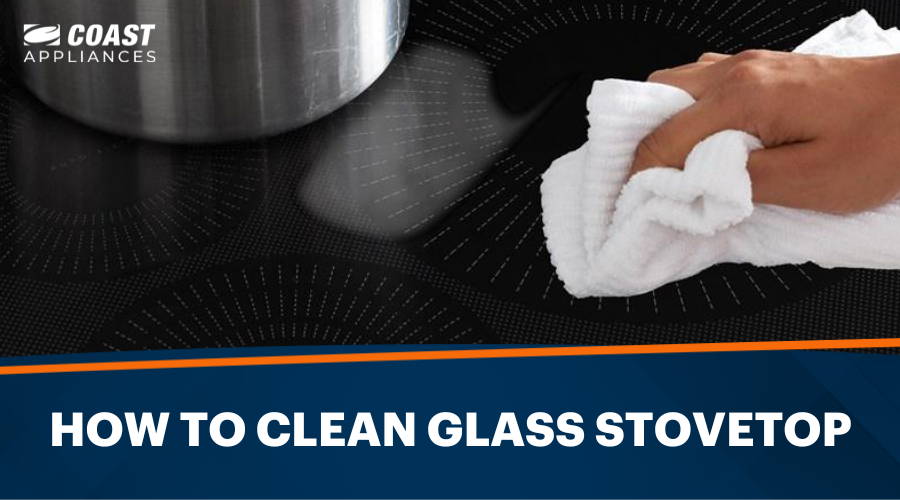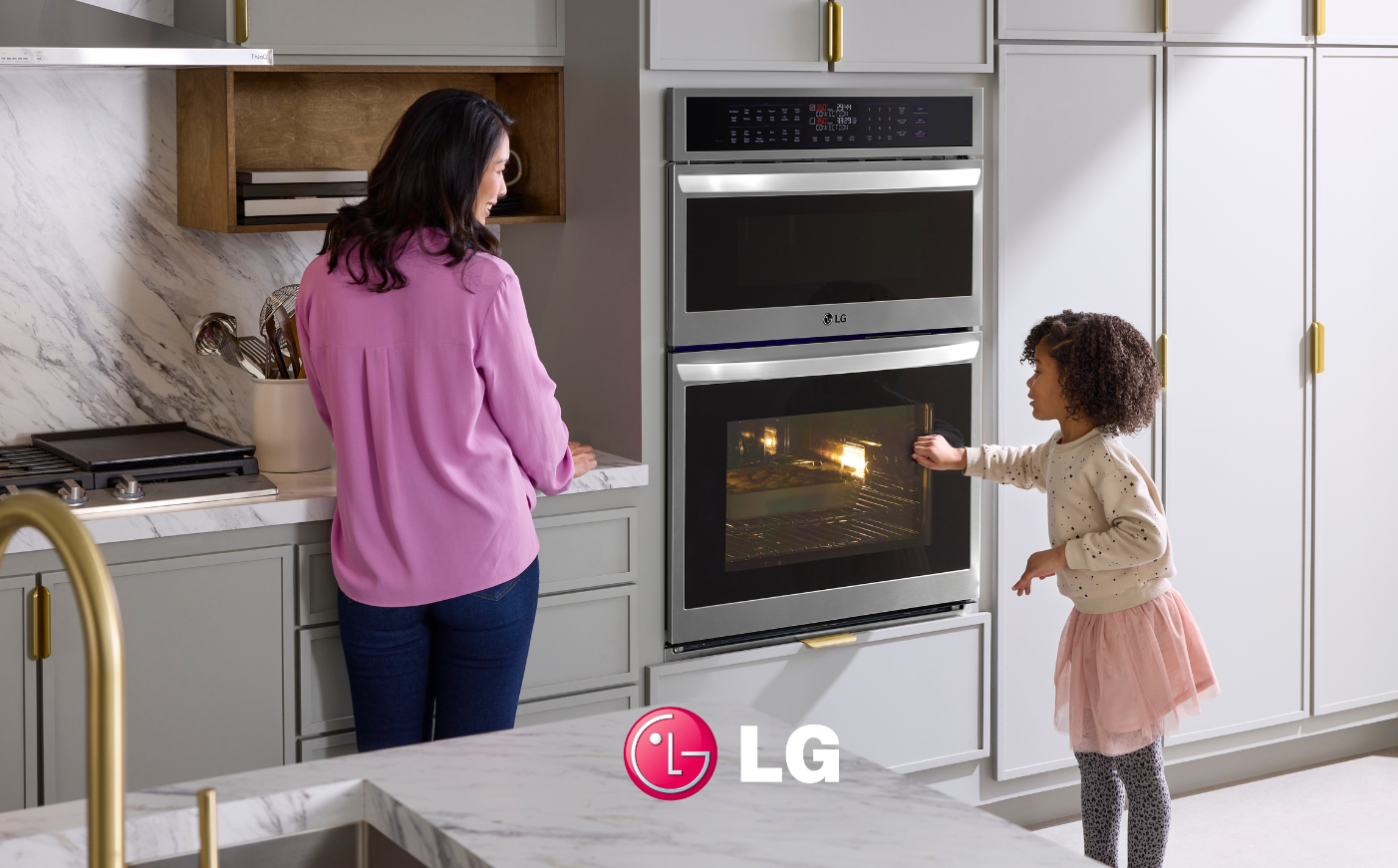Keeping your glass stovetop sparkling clean doesn’t have to be a chore, even for the busiest of people. With the right techniques and some simple household ingredients, you can make your cooktop shine without too much time or effort. Let’s explore how to get it done quickly and efficiently.
What You’ll Need
● Baking Soda: A natural abrasive that’s effective at removing tough stains without scratching the glass surface.
● White Vinegar: Acts as a natural disinfectant and degreaser, breaking down grime and leaving a streak-free shine.
● Dish Soap: Cuts through grease and helps lift food particles from the stovetop, making them easier to wipe away.
● Spray Bottle (Optional): Convenient for evenly distributing vinegar or cleaning solution across the stovetop.
● Bowl for Mixing: Used to create soapy water or other cleaning mixtures.
● Microfiber Cloths or Soft Sponges: Gentle on the glass surface and effective at cleaning without scratching. Microfiber cloths are also great for polishing and leaving a streak-free finish.
● Razor Blade Scraper (Optional): Useful for carefully removing burnt-on food or tough residue—must be used with caution to avoid scratching the glass.
Preparing Your Glass Stovetop for Cleaning
- Safety First – Ensure the stove is turned off before you start cleaning. Wait until the stovetop is completely cool to avoid burns.
- Clear the Surface – Remove any pots, pans, utensils, or other items from the stovetop.
- Remove Grates and Burners – Carefully remove grates and burners off the stovetop. For electric stoves with coils, gently unplug the coils and lift them away. This step is not applicable for a smooth glass stovetop that doesn’t have separate burners or grates but is crucial for models with these features to access the glass surface beneath.
- Wipe Off Loose Debris – Using a dry or slightly damp cloth, gently wipe the surface to remove any loose debris or crumbs. This helps prevent scratching the glass when you apply the cleaning solution.
Basic Cleaning Method
This step is for day-to-day maintenance to keep your glass stovetop looking its best.
Process
● Mix equal parts of white vinegar and water in a spray bottle.
● Spray the solution over the stovetop and wipe with a microfiber cloth for a streak-free finish.
● For daily dirt and grease, a quick wipe with soapy water followed by a rinse with a damp cloth and a final dry polish should suffice.
Dealing with Burnt-on Residue
Burnt-on residue can be stubborn and requires a bit more effort to remove without damaging the glass surface.
Process
- Sprinkle baking soda over the affected area.
- Lay a hot, damp cloth on top for about 15 minutes to loosen the residue.
- Gently scrub the area with the cloth or use a razor blade scraper at a 45-degree angle for stubborn spots, ensuring not to scratch the surface.
Removing Tough Stains
Tough stains from boiled-over pots or heavily used areas require a more targeted approach.
● Mineral Deposits: For mineral deposits from hard water, apply a mixture of vinegar and water directly to the spots, let it sit for a few minutes, then wipe away with a soft cloth. If necessary, a gentle scrub with baking soda can help remove persistent deposits.
● Grease Stains: Mix a few drops of dish soap with baking soda and water to create a powerful degreasing paste. Apply the paste to the grease spots, leave for 10 minutes, then scrub gently and rinse.
● Ink or Dye Stains: Ink or dye stains can be removed by rubbing alcohol or nail polish remover applied to a soft cloth and gently wiped over the stain. Rinse thoroughly with water afterward to remove any chemical residue.
● Burnt Sugar or Plastic: Quickly remove any remnants of burnt sugar or melted plastic while the stove is still warm (but not hot) using a wooden spoon or spatula. Then, clean the area with a cloth dipped in hot, soapy water.
● Food Spills: For dried or burnt food spills, a razor blade scraper can be carefully used at a slight angle to lift the debris without scratching the surface. Follow up with a vinegar spray and wipe down with a microfiber cloth.
Dealing with Glass Stove Scratches
Addressing scratches on a glass stovetop requires a careful approach to prevent further damage. Here’s how to minimize and conceal them:
● Avoiding Abrasive Materials: Only use soft cloths or sponges for cleaning to prevent further scratches on the glass surface.
● Using a Razor Blade Scraper: Carefully use a razor blade scraper at a shallow angle to remove stuck-on food, minimizing the risk of adding scratches.
● Polishing and Buffing: Apply a small amount of cooktop polish or baking soda paste and buff it with a soft cloth to reduce the appearance of light scratches.
● Ceramic Cooktop Cleaner: Specialized cleaners for ceramic or glass cooktops can fill in minor scratches, making them less noticeable.
● Regular Maintenance: Keep the stovetop clean and avoid spills from hardening to prevent scratches.
Routine Maintenance Tips
Here are simple maintenance tips to extend the life of your glass stovetop and keep it looking clean and new:
● Daily Wiping: Give the stovetop a quick wipe with a damp cloth to remove spills and splatters and prevent buildup.
● Avoid Harsh Chemicals: Stick to gentle, non-abrasive cleaners like dish soap, baking soda, and vinegar to avoid damaging the surface.
● Use the Right Utensils: Avoid using metal spatulas or knives on the cooktop—opt for wooden or silicone to prevent scratches.
● Immediate Spill Clean Up: Tend to spills as soon as the stovetop is cool to the touch. Sugar-based spills, in particular, can cause pitting if left unattended.
● Protect the Surface: Never place heavy pots or pans too forcefully on the cooktop and avoid using the surface as a cutting board.
● Regular Deep Cleaning: Schedule a thorough cleaning weekly or bi-weekly, depending on use, to tackle tougher stains and buildup.
● Check for Cracks: Regularly inspect your stovetop for cracks. Even tiny cracks can lead to bigger issues if not addressed early.
Wrapping Up
Keep your glass stovetop clean and in prime condition to enhance the look of your kitchen and ensure optimal performance. Thinking of an upgrade? Discover your next kitchen centrepiece with Coast Appliances where our appliance experts can help find the perfect piece so functionality meets elegance.
FAQs
What should I do if there are stubborn stains or discoloration on my glass stovetop?
For stubborn stains, apply a paste made from baking soda and water, let it sit for up to 30 minutes, then gently scrub with a soft cloth. For discoloration, a specialized cooktop cleaner can be effective.
What is the best cleaner for glass top stoves?
A mixture of baking soda and vinegar is highly effective for most cleaning needs.
Is it safe to use vinegar on a glass stovetop?
Yes. It’s an effective, natural degreaser and disinfectant that doesn’t leave harmful residue behind.
Can I use commercial glass cleaners on my stovetop?
Commercial glass cleaners are safe for glass stovetops. Avoid using those meant for windows or mirrors that contain ammonia, as they may leave streaks or damage the surface over time.
Can I use a steam cleaner on a glass stovetop?
Using a steam cleaner is not recommended for glass stovetops. The intense heat and moisture can damage the electrical components beneath the surface.














